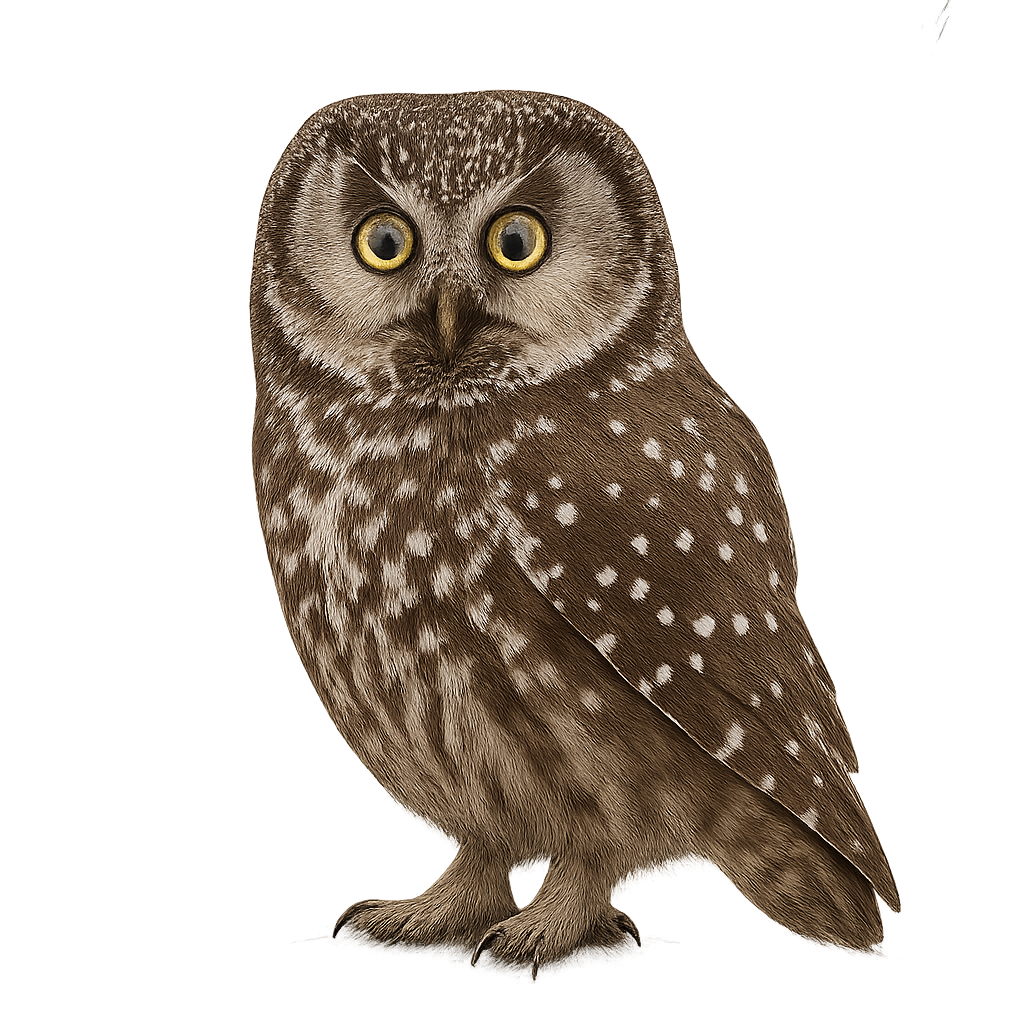Your wildlife photography guide.
Explore the tengmalm's owl in detail, study its behavior, prepare your shots.
Where to observe and photograph the tengmalm's owl in the wild
Learn where and when to spot the tengmalm's owl in the wild, how to identify the species based on distinctive features, and what natural environments it inhabits. The WildlifePhotographer app offers tailored photography tips that reflect the tengmalm's owl’s behavior, helping you capture better wildlife images. Explore the full species profile for key information including description, habitat, active periods, and approach techniques.
Tengmalm's owl
Scientific name: Aegolius funereus

IUCN Status: Least Concern
Family: STRIGIDAE
Group: Birds
Sensitivity to human approach: Suspicious
Minimum approach distance: 30 m
Courtship display: February to April
Incubation: 25-32 jours
Hatchings: March to June
Habitat:
Coniferous forests
Activity period :
Mainly active at night, generally discreet during the day.
Identification and description:
Tengmalm's Owl is a small nocturnal raptor, easily recognized by its small size and large, piercing yellow eyes. It has gray-brown plumage with characteristic white markings on the head, wings, and back. Its ears are very inconspicuous, and its face is surrounded by a pale facial disc. This owl primarily inhabits coniferous forests, dense wooded areas, and mountains, where it hides in tree cavities or abandoned nests of other birds.
Tengmalm's Owl mainly hunts small mammals, birds, and insects, which it catches at night by flying silently through the forests. It is particularly active during the breeding season, when it emits characteristic calls to attract its mate. Although it is relatively discreet and often difficult to observe, Tengmalm's Owl is protected in some areas, though its population is threatened by deforestation and habitat loss.
Recommended lens:
300 mm – adjust based on distance, desired framing (portrait or habitat), and approach conditions.
Photography tips:
Use a telephoto lens to photograph from a distance, respecting the owl's discreet nature.
Photograph early in the morning or late in the afternoon, when the owl is more active.
Look for it in coniferous forests or wooded mountain areas, especially in ranges such as the Alps, Jura, or Vosges.
Be patient and discreet to avoid disturbing its natural behavior.
The Boreal Owl is classified as Least Concern by the IUCN. However, it is sensitive to the loss of its forest habitat. It is essential to respect its natural environment and minimize human disturbance.
The WildlifePhotographer App is coming soon!
Be the first to explore the best nature spots, track rutting seasons, log your observations, and observe more wildlife.
Already 1 429 wildlife lovers subscribed worldwide

